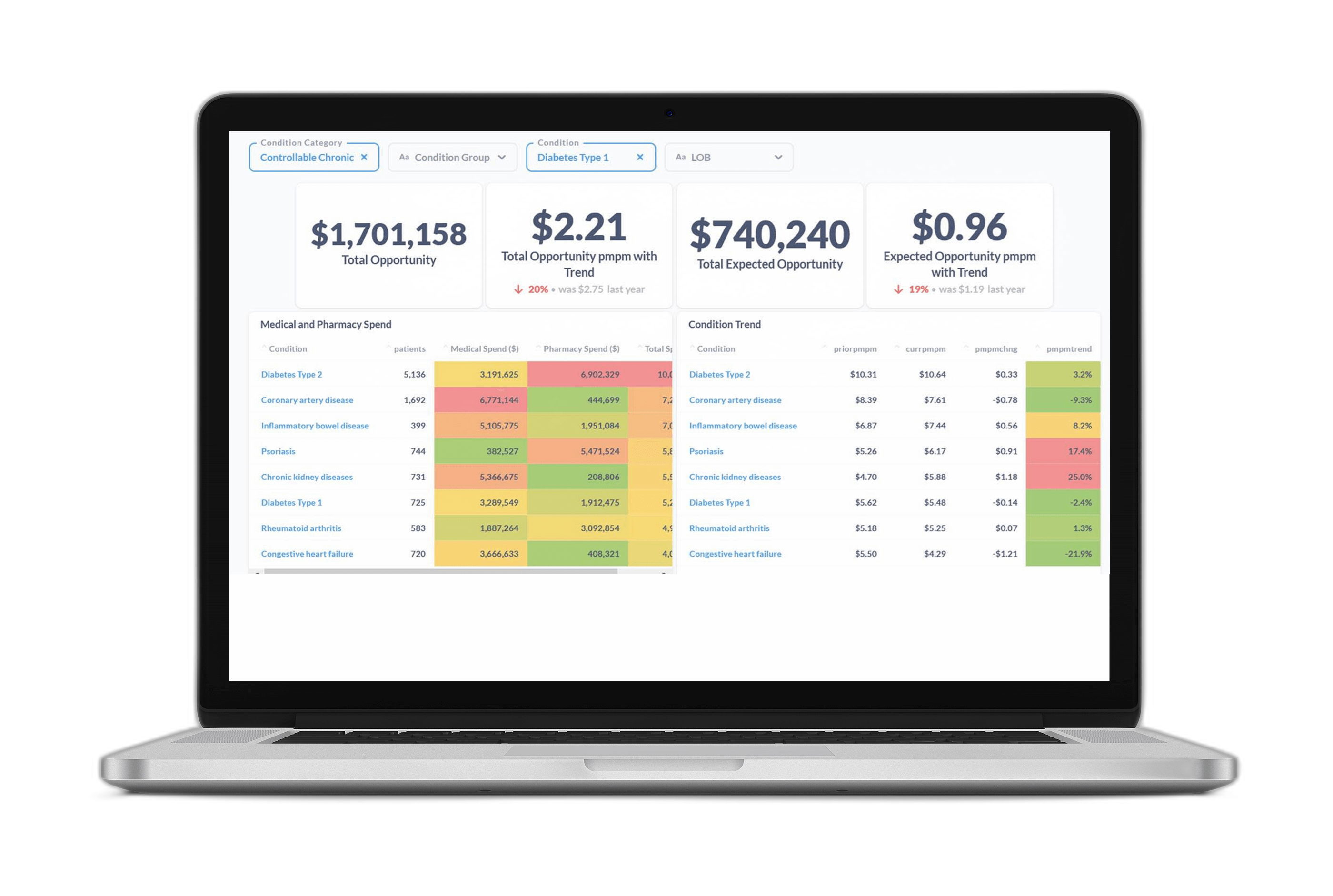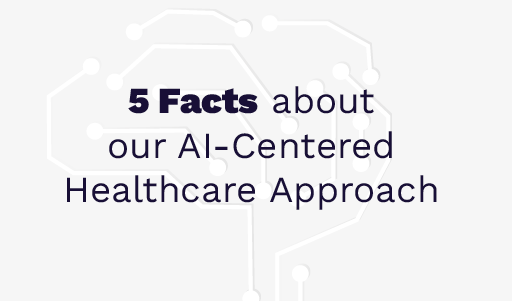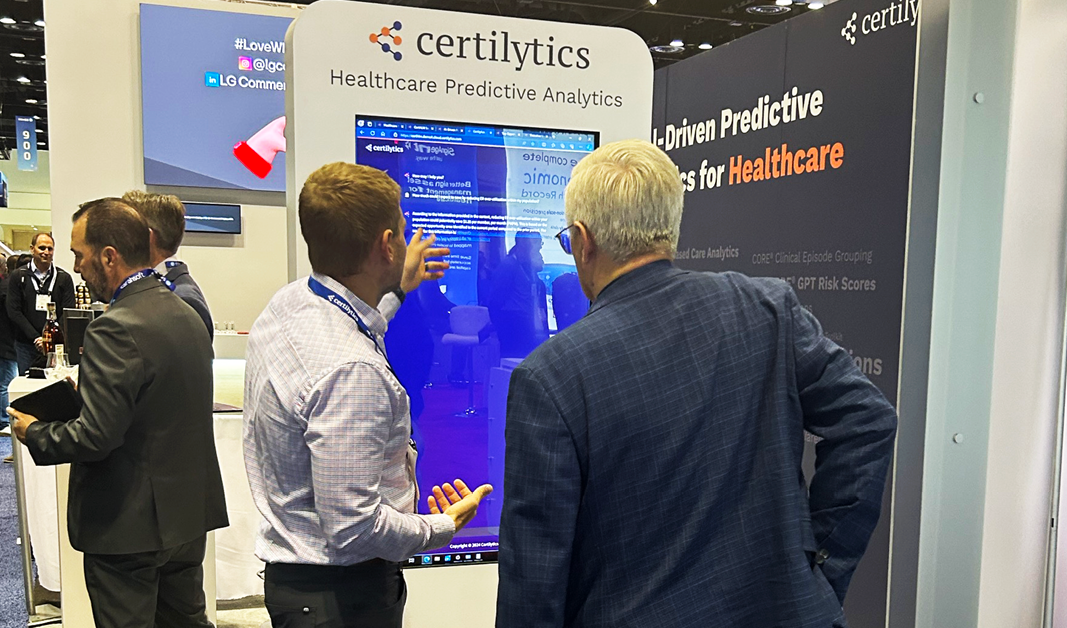Predictive modeling can transform your ability to understand the whole health picture for your employees and their dependents – everything from emerging clinical risk factors to which employees are most likely to modify their behaviors as a result of a new program or wellness app.
Because predictive modeling can support improved employee health & well-being in many different ways, figuring out where to start can sometimes feel daunting. To help jumpstart your efforts, here are three high-impact ways that some of the most innovative self-insured employers are using data warehousing and predictive modeling to better serve their health plan populations and bend the healthcare cost curve.
Predicting the Risk of Opioid Addiction by Connecting the Dots Across Data Feeds
Opioid use disorder (OUD) continues to devastate families and communities across the U.S. For employers, OUD has direct and trailing costs – and being able to predict which health plan members are at greatest risk saves lives in addition to dollars.
The dollar amounts in questions are significant. A review published by the Society of Actuaries in 2019 estimated that commercially insured patients suffering from OUD incurred an average of $17,867 in additional healthcare costs relative to comparable peers not experiencing OUD – accounting for about $64 billion in additional healthcare spending in 2018 alone. OUD-related losses to productivity that same year accounted for another $26.5 billion hit to employers’ bottom lines.
Predictive modeling paired with more effective big data management can help you get ahead of OUD rather than reacting to it after the fact. By accurately identifying the members with the highest emerging and future risk of OUD, benefit teams and healthcare providers can work together to ensure that the risk is minimized. This could include clinical intervention, encouraging different treatment options such as physical or massage therapy and non-opioid prescription alternatives, or simply educating the employee on the options available to address underlying issues heightening their risk of OUD.
Today, meaningful signals of elevated OUD risk are dispersed across benefit, healthcare, and wellness data feeds, making them difficult to uncover and connect using traditional analytics and risk-scoring solutions. The good news for employers is that data warehousing solutions and predictive models built to overcome this challenge can connect the dots across all data feeds more accurately than traditional approaches ever could. For example, members identified as high risk through Certilytics’ opioid predictive model are 38.5 times more likely to become dependent on opioids than their relevant peers from the same health plan population.
Understanding, Predicting, and Reducing Avoidable Repeat Visits to the ER
Predictive modeling can also identify health plan members at high risk of becoming an emergency room “overutilizer” within the next 12 months. ER visits for non-urgent medical issues aren’t just stressful and expensive – they’re typically far from the best way to treat the chronic disease or underlying condition that led the member to seek care at the ER in the first place.
As with OUD, the signals of elevated risk of avoidable ER visits are widely dispersed across benefits and healthcare data. They can include low-grade symptoms that hint at an emerging chronic condition; inconsistent medication adherence; the lack of benefit utilization for primary & preventative care; social determinants of health; and insights drawn from consumer wearables and other non-traditional data sources.
Predictive modeling that can actually incorporate all of these data feeds yields a remarkably clearer picture of who’s truly at risk for avoidable repeat ER visits. In Certilytics’ model, for instance, members identified as high risk are 24.1 times more likely to have three or more ER visits in the next 12 months than the average plan member.
Once these high risk members are identified, benefit and wellness teams can further leverage predictive modeling to build out a plan for engagement and education – an approach that has proven highly successful for many self-insured employers in recent years.
Making Smarter, More Targeted use of Telehealth
Providers, patients, employers, and health plans have all become more familiar with telehealth during the pandemic. More patients used telehealth services for the first time, and among the 44% of Americans who have now used telehealth at least once, nearly 8 in 10 say they’re likely to use it again.
Still, that’s not everyone – and telehealth isn’t always the right care option. By predicting which health plan members are most likely to use telehealth services in the next 12 months, benefit teams can better target their efforts to educate members about when (and when not) to use telehealth services. Analyzing the success of these efforts and gathering feedback from employees on when and why telehealth works best for them – such as for the routine refilling of prescriptions – can then be used to inform member engagement and education more broadly.
Conclusion: Putting Predictive Modeling to Work in Service of Improved Health & Well-Being
The applications outlined in this post offer concrete ways benefit leaders have successfully leveraged predictive modeling to improve employee health and well-being – while also gaining insights that are helping them achieve smarter healthcare spend this year and in the future. Keep your eyes peeled for upcoming posts on what that smarter spending looks like and how you can overcome a lack of connectedness across healthcare, wellness, and benefits data.









